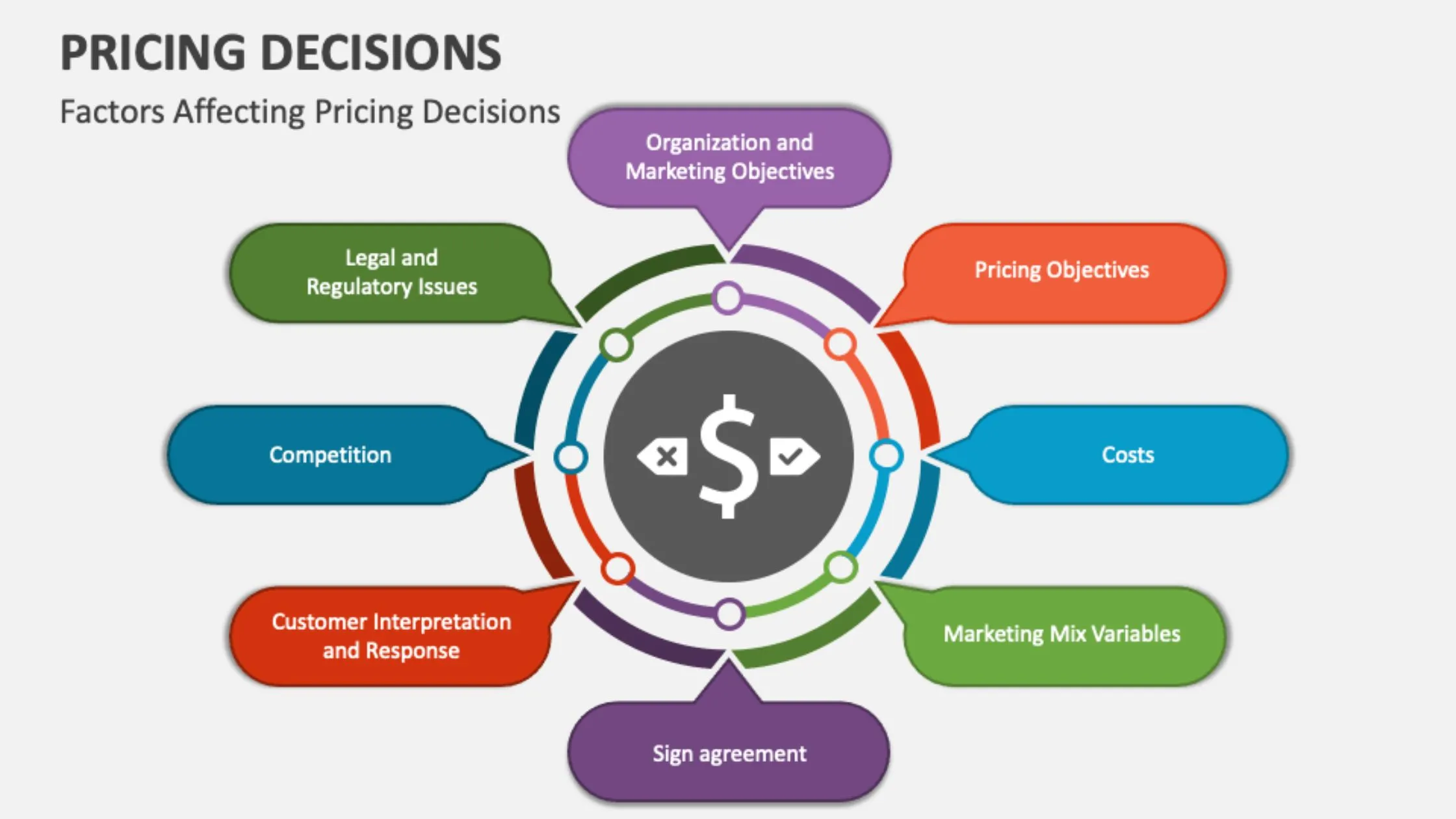
The pricing decisions in marketing management control directly affects how much money a company makes. When marketers choose prices that cover what it costs to make goods and aim for the right amount of profit, they help keep the business doing well financially. But price goes beyond just numbers. It also shapes brand image. Premium pricing can make a product seem expensive and high-quality, while value pricing can attract people who are careful with their money.
The price of something has a big effect on how many sales there are. The correct price can attract customers to buy, but if the price seems too much, it could cause lost sales.
The Foundation of Pricing
The beginning of setting prices usually starts with the cost. When we use cost-based pricing models, we consider production costs, expenses for advertising, and the profit margin that we want in order to figure out a price to sell. This makes sure the business at least pays for its costs. But, more detailed pricing decisions in marketing management are activity-based costing. It is more than just adding up expenses; it gives them to particular activities involved in making things.
Customer Value
Customer’s perceived value is the whole worth a customer thinks they get from your goods or services. Pricing decisions in marketing management considers things like quality, how it works, the brand’s good reputation, and even the feeling of buying it. Surveys and market research show what parts affect the worthiness of your product to customers.
The Pricing Battlefield
Competitive pricing can mean doing the same as a competitor in terms of cost. Or, it could mean setting prices lower than others to get more of the market. But, there is also a way called “differentiation pricing” where you pay attention to special things or benefits to charge more. To make pricing decisions in marketing management in this competitive area, it’s important to do market research and look at what other companies are doing.
How Price Shapes Your Image
Premium pricing brings to mind luxury and being exclusive. A price that is high indicates high quality, careful workmanship, or even a higher status. This makes your product look wanted and attracts a particular, upscale group of customers.
On the other side, cost-based pricing makes your product appear affordable and easy on money. It attracts customers seeking affordability and practical solutions.
The important thing in pricing decisions in marketing management is to match with your brand talking and the people you want to sell to. If you are a luxury watch company, it is not good to use pricing that shows value, but if you are a low-cost clothing store, customers will not come if you charge high prices.
The Price & Its Partners
A product that is great in quality and has many features might be worth paying more money, but a simpler product might use lower price options and promotions with add-ons to help make more sales. Also, how we sell the product matters. Luxury products can be sold in special shops to keep their high-end image, and budget items can be sent to many places through big stores.
To make a good pricing decisions in marketing management, we need to look at all these things as one. The price should go with the features of the product and the promotional campaigns too.
Strategies for Success
- Introduce new items that have a high starting cost in order to attract early adopters who are prepared to spend more. Reduce the price progressively as the market develops.
- Use a cheap initial pricing to enter a competitive market in order to increase market share and brand recognition. After you build a clientele, you can increase prices.
- Provide a package deal for several goods or services, saving customers money over purchasing them separately.
- Offer a product at a loss in order to draw clients who will subsequently purchase more lucrative goods from your store.
The Psychology of Price
Pricing is more than just numbers; it connects to how people think. Using methods like $19.99 instead of $20 can make people feel they are getting a better offer. Price anchoring is when a higher cost is displayed before giving a sale price, this makes the final cost appear more appealing. Pricing decisions in marketing management methods can push people to make purchases. But, ethical things are very important.
Adapting to a Changing Market
Dynamic pricing helps theaters by increasing the prices to catch that greater readiness from customers to pay. On the other hand, if a product is not selling much, dynamic pricing can bring down the price so more people will buy it. This way of using data lets businesses make the most money possible and adapt to changes in the market.
Pricing decisions in marketing management are central to achieving marketing goals. If you know your costs, think about customer perception of worth and adjust to the competition, then you can create a price strategy that boosts profit, improves brand image as well as propels sales growth. Be aware that pricing is not an action done only once; it’s an ongoing interaction with the market.

